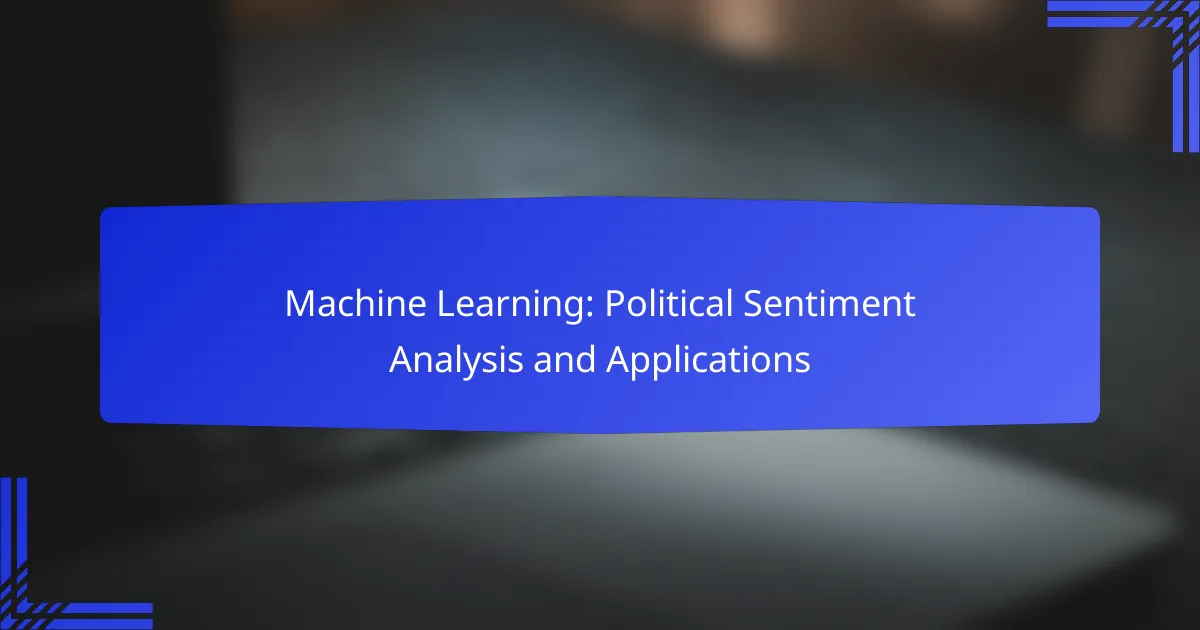Machine learning plays a crucial role in political sentiment analysis by enabling the examination of vast amounts of text data to uncover the emotional undertones of political discourse. This analysis helps gauge public opinion, predict election results, and evaluate policy impacts, providing valuable insights for political strategies and decision-making.
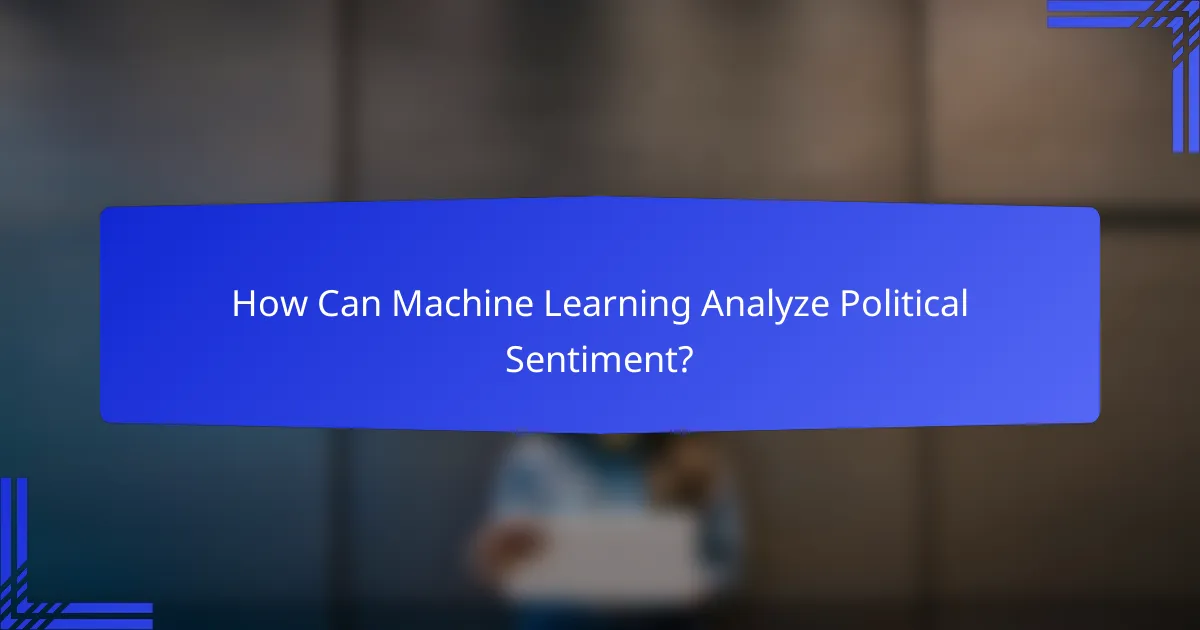
How Can Machine Learning Analyze Political Sentiment?
Machine learning can analyze political sentiment by processing large volumes of text data to determine the emotional tone behind political discussions. This involves using algorithms that classify sentiments as positive, negative, or neutral based on the language used in social media posts, news articles, and speeches.
Natural Language Processing Techniques
Natural Language Processing (NLP) techniques are essential for understanding and interpreting human language in political sentiment analysis. Common methods include tokenization, which breaks down text into individual words or phrases, and stemming, which reduces words to their base forms. These techniques help in identifying key sentiments expressed in political discourse.
Another important NLP technique is sentiment lexicon creation, where words are assigned sentiment scores based on their emotional connotations. This allows machine learning models to evaluate the overall sentiment of a text by aggregating the scores of the words it contains.
Sentiment Classification Models
Sentiment classification models are designed to categorize text data into sentiment classes. Popular models include Support Vector Machines (SVM), Naive Bayes, and more recently, deep learning models like Long Short-Term Memory (LSTM) networks. Each model has its strengths; for instance, deep learning models often outperform traditional methods in capturing complex language patterns.
When selecting a model, consider factors such as the size of the dataset and the required accuracy. For smaller datasets, simpler models may suffice, while larger datasets typically benefit from more complex architectures that can learn nuanced sentiment expressions.
Data Sources for Political Sentiment
Data sources for political sentiment analysis include social media platforms, news websites, and public forums where political discussions occur. Twitter and Facebook are particularly rich in real-time sentiment data, while news articles provide context and depth to political events.
When gathering data, ensure it is representative of the target population to avoid bias. For instance, analyzing tweets may yield different sentiments compared to traditional news articles due to the informal language used on social media.
Real-time Analysis Capabilities
Real-time analysis capabilities allow for the immediate assessment of political sentiment as events unfold. This is particularly useful during elections or major political announcements, where public sentiment can shift rapidly. Machine learning models can process and analyze data streams in near real-time, providing insights into public opinion.
To implement real-time sentiment analysis, utilize streaming data processing frameworks like Apache Kafka or Apache Flink. These tools enable the continuous ingestion and analysis of data, ensuring timely insights that can inform political strategies or responses.
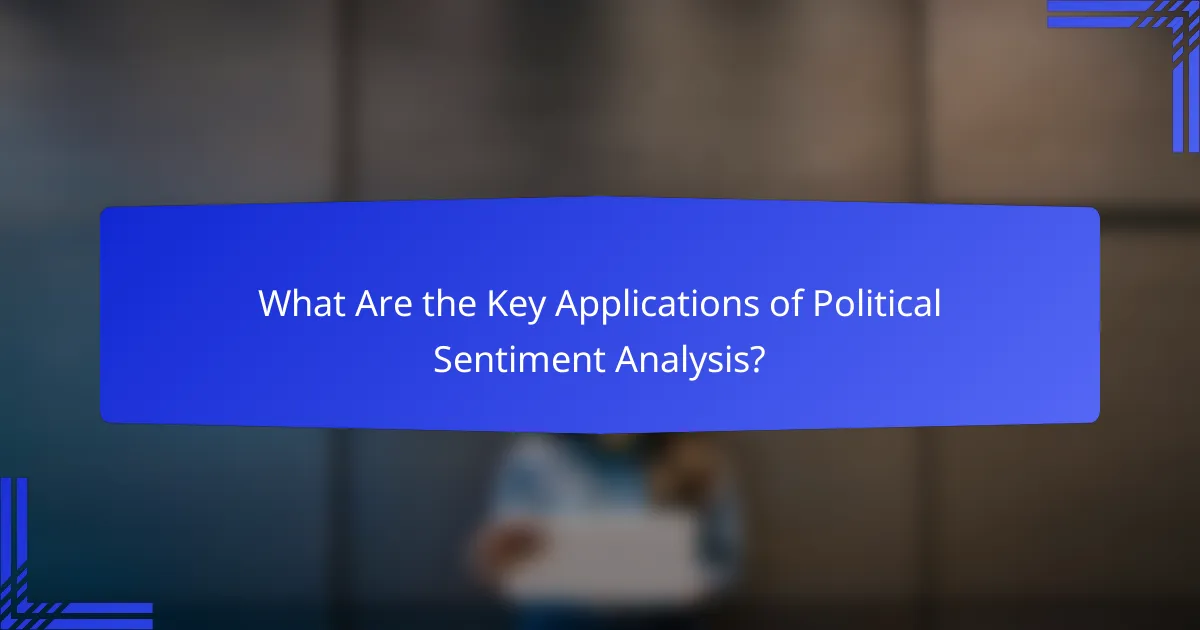
What Are the Key Applications of Political Sentiment Analysis?
Political sentiment analysis is primarily used to gauge public opinion, forecast election outcomes, and assess the impact of policies. By analyzing social media, news articles, and other text sources, organizations can derive insights that inform political strategies and decision-making.
Election Forecasting
Election forecasting utilizes sentiment analysis to predict voter behavior and election outcomes. By analyzing sentiments expressed in social media posts, news articles, and surveys, analysts can gauge public support for candidates or parties. This method can provide insights weeks or even months before an election, helping campaigns adjust their strategies accordingly.
For effective election forecasting, it’s crucial to consider the timing of data collection and the demographics of the audience being analyzed. For instance, focusing on swing states or key voter groups can yield more accurate predictions. However, be cautious of biases in data sources, as they can skew results.
Policy Impact Assessment
Policy impact assessment involves analyzing public sentiment regarding specific policies or legislative proposals. By monitoring reactions to new laws or initiatives, governments and organizations can understand how policies are perceived and identify potential areas for improvement. This analysis can inform future policy decisions and enhance public engagement.
To effectively assess policy impact, utilize sentiment analysis tools that can track changes in public opinion over time. For example, measuring sentiment before and after a policy is implemented can reveal its effectiveness and acceptance. It’s essential to consider various data sources, including social media, opinion polls, and public forums, to gain a comprehensive view.
Public Opinion Monitoring
Public opinion monitoring tracks sentiments on various political issues, helping stakeholders understand the electorate’s mood. This ongoing analysis can highlight emerging trends, concerns, or shifts in public attitudes, enabling timely responses from political leaders and organizations. Regular monitoring can also enhance transparency and accountability in governance.
For effective public opinion monitoring, establish a routine for collecting and analyzing sentiment data. Tools that aggregate social media sentiment or conduct surveys can provide valuable insights. Be mindful of the context in which opinions are expressed, as events or crises can significantly influence public sentiment.
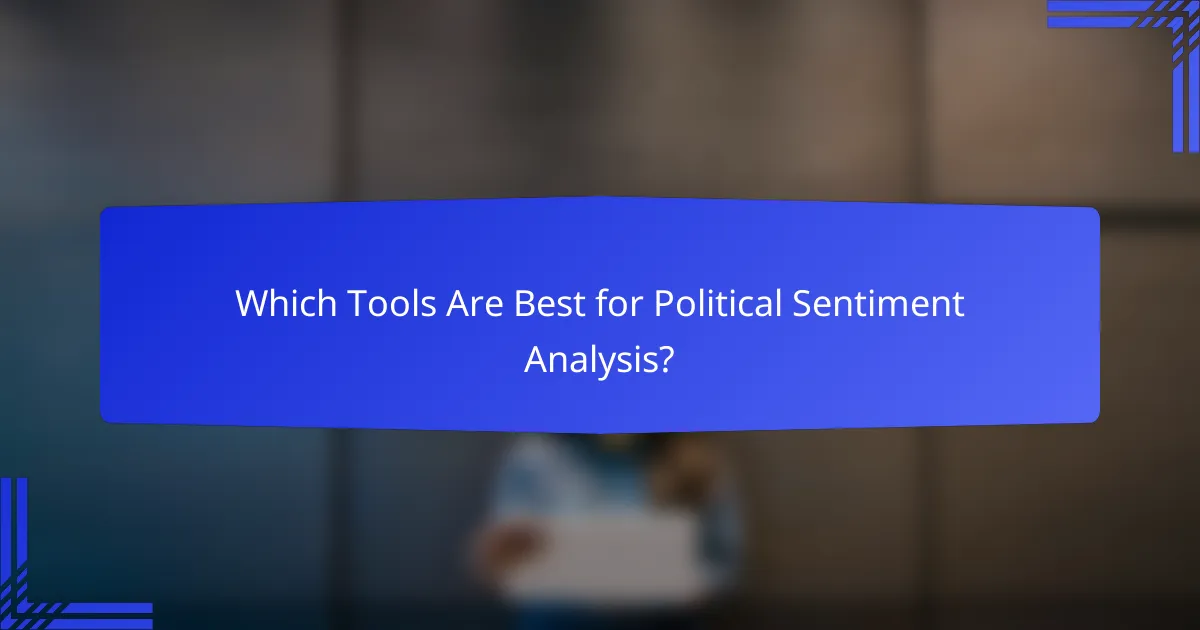
Which Tools Are Best for Political Sentiment Analysis?
Several tools excel in political sentiment analysis, each with unique features and capabilities. The best choice depends on your specific needs, such as the volume of data, required accuracy, and integration capabilities.
IBM Watson Natural Language Understanding
IBM Watson Natural Language Understanding offers advanced sentiment analysis capabilities, particularly suited for processing large volumes of text data. It utilizes machine learning to analyze emotions, sentiment, and even tone, providing insights that can be crucial for understanding political discourse.
When using IBM Watson, consider its pricing model, which typically operates on a pay-as-you-go basis. This can be cost-effective for smaller projects but may become expensive with high usage. Always evaluate your expected data volume against the pricing structure.
Google Cloud Natural Language API
Google Cloud Natural Language API is another powerful tool for political sentiment analysis, leveraging Google’s extensive machine learning capabilities. It can analyze text for sentiment, entity recognition, and syntax, making it versatile for various applications in political analysis.
One key advantage of this API is its scalability and integration with other Google Cloud services. However, users should be aware of potential latency issues, especially when processing large datasets. Testing with smaller samples can help gauge performance before full-scale implementation.
Sentiment Analysis with Python Libraries
Python libraries such as NLTK, TextBlob, and VADER are popular for conducting sentiment analysis in political contexts. These libraries provide flexibility and can be tailored to specific datasets, allowing for custom sentiment scoring based on political language nuances.
When using Python for sentiment analysis, ensure you preprocess your data effectively to improve accuracy. Common pitfalls include ignoring context and failing to account for sarcasm or idiomatic expressions, which can skew results. Regularly updating your models with new data will enhance their reliability over time.
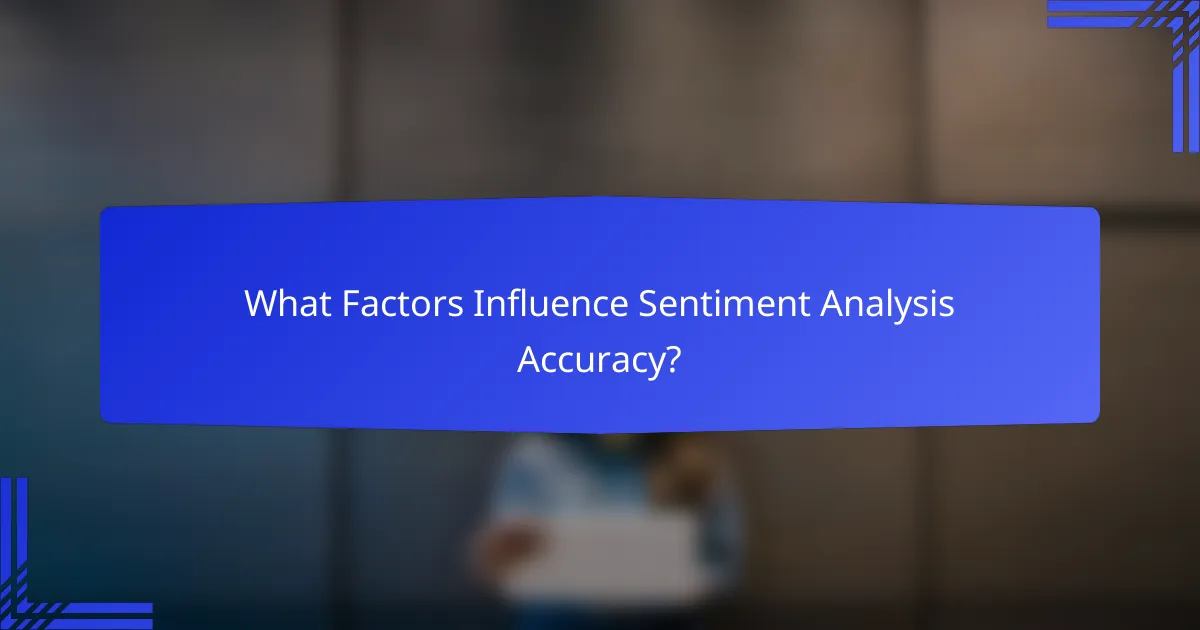
What Factors Influence Sentiment Analysis Accuracy?
The accuracy of sentiment analysis is influenced by several key factors, including the quality and volume of data, the choice of model and its training, and the language and cultural context of the text being analyzed. Understanding these elements can significantly enhance the effectiveness of sentiment analysis in political applications.
Data Quality and Volume
High-quality data is crucial for accurate sentiment analysis. This includes having a diverse dataset that captures various opinions and sentiments, as well as ensuring that the data is clean and free from noise. A larger volume of data can improve model performance, but it must be relevant and representative of the target population.
Common pitfalls include using biased datasets or failing to preprocess data adequately, which can lead to skewed results. Aim for a dataset that includes thousands of samples to achieve better generalization across different sentiments.
Model Selection and Training
The choice of machine learning model significantly impacts sentiment analysis accuracy. Models like Support Vector Machines (SVM), Random Forests, and deep learning approaches such as LSTM or transformers can yield different results based on the task. Selecting the right model involves considering the complexity of the data and the specific sentiment analysis goals.
Training the model effectively is equally important. Ensure you use techniques like cross-validation and hyperparameter tuning to optimize performance. Regularly updating the model with new data can also help maintain its relevance and accuracy over time.
Language and Cultural Context
Language nuances and cultural context play a vital role in sentiment analysis. Different languages have unique expressions and idioms that can affect sentiment interpretation. For instance, sarcasm or regional slang can mislead models that lack contextual understanding.
When analyzing political sentiment, consider the cultural background of the audience. Tailoring the model to account for local dialects and political terminology can enhance accuracy. Collaborating with local experts or using region-specific datasets can help mitigate these challenges.

How to Choose the Right Machine Learning Model?
Choosing the right machine learning model involves understanding the specific problem, the nature of the data, and the desired outcomes. Factors such as accuracy, interpretability, and computational efficiency play crucial roles in this decision-making process.
Comparative Analysis of Algorithms
When selecting a machine learning algorithm, it’s essential to compare their strengths and weaknesses. For instance, decision trees are easy to interpret but can overfit, while support vector machines are powerful for classification tasks but may require careful tuning of parameters.
Consider the nature of your data: if you have a large dataset with complex patterns, deep learning models might be suitable. Conversely, for smaller datasets, simpler models like linear regression or logistic regression could yield better results. Always evaluate the trade-offs between model complexity and performance.
Evaluation Metrics for Model Performance
To assess the performance of your chosen machine learning model, utilize various evaluation metrics. Common metrics include accuracy, precision, recall, and F1 score. For instance, in a political sentiment analysis context, precision and recall are crucial to ensure that the model correctly identifies sentiments without missing significant instances.
It’s also important to use cross-validation techniques to validate model performance. This approach helps in understanding how the model generalizes to unseen data. Aim for a balance between different metrics to avoid overfitting and ensure robust performance across diverse datasets.
